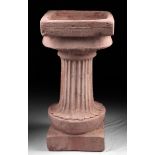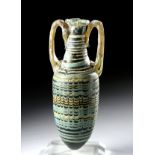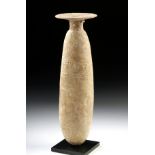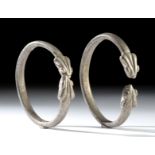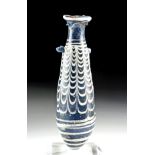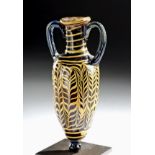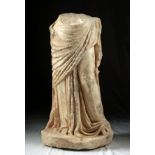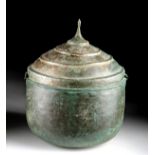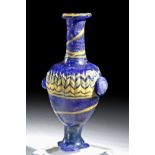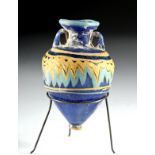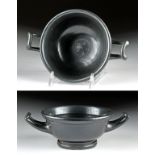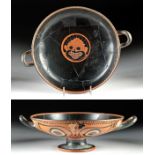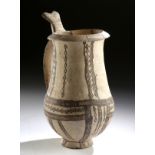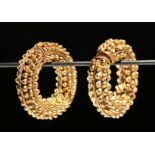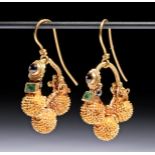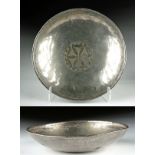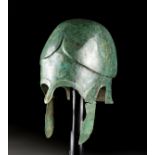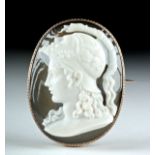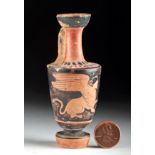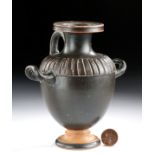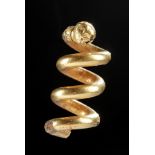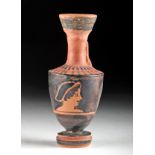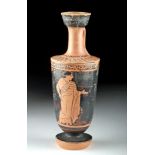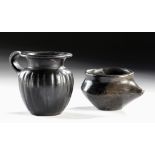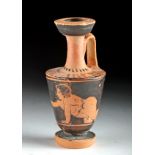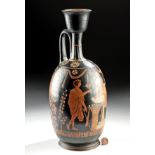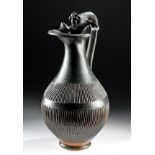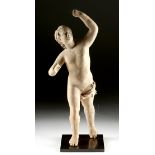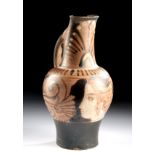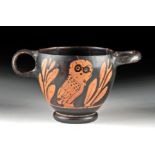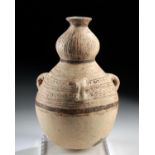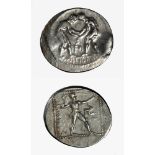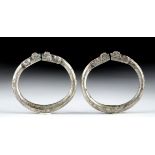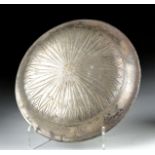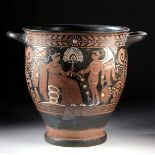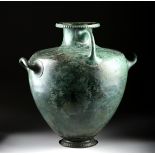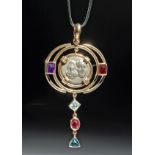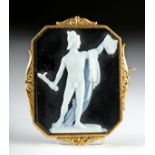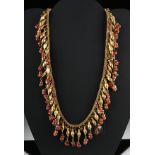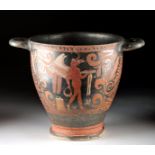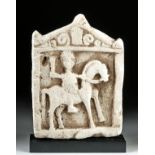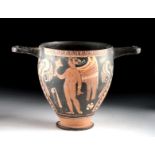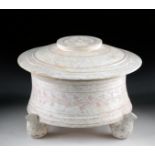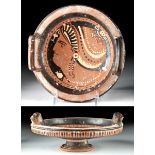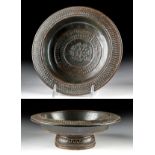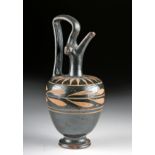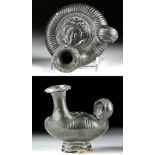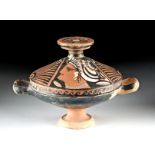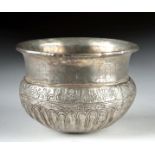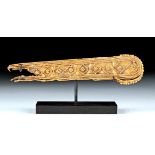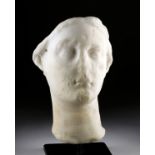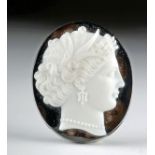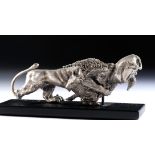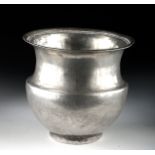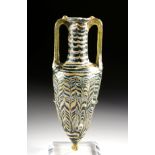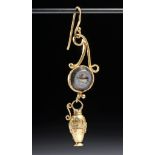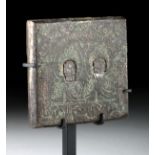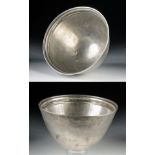Refine your search
Estimate
Category
- Sculpture (111)
- Greek, Roman, Egyptian & Other Antiquities (41)
- Collectables (25)
- Jewellery (22)
- Ceramics (20)
- Arms, Armour & Militaria (18)
- Salvage & Architectural Antiques (15)
- Coins (11)
- Glassware (11)
- Chinese Works of Art (8)
- Sporting Memorabilia & Equipment (6)
- Lighting (5)
- Metalware (5)
- Furniture (4)
- Prints (4)
- Islamic Works of Art (3)
- Oil, Acrylic paintings & Mixed Media (3)
- Stamps (3)
- Textiles (3)
- Vintage Fashion (3)
- Kitchenalia (2)
- Watercolours (2)
- Books & Periodicals (1)
- Drawings & Pastels (1)
- Ethnographica & Tribal Art (1)
- Indian Works of Art (1)
- Japanese Works of Art (1)
- Models, Toys, Dolls & Games (1)
- Musical Instruments & Memorabilia (1)
- Silver & Silver-plated items (1)
- Taxidermy & Natural History (1)
- Tools (1)
- List
- Grid
A subscription to the Price Guide is required to view results for auctions ten days or older. Click here for more information
Greece, Classical to early Hellenistic Periods, ca. 5th to 3rd century BCE. A massive two part terracotta pedestal, made to hold a louterion (a ve...
Greece, late Hellenistic Period, ca. 2nd to 1st century BCE. A gorgeous example of a core-formed glass amphoriskos once used to hold perfumed oil....
Greece, Hellenistic period, ca. late 4th to 2nd century BCE. A finely molded ceramic alabastron, with a teardrop shaped body, a short attenuated n...
Greece, Classical Period, ca. 5th century BCE. A pair of heavy, matching silver bracelets - each made from 93% pure silver - with snake-headed ter...
Ancient Greece, Hellenistic, ca. 3rd to 1st century BCE. A striking core-formed glass alabastron, so named because many vessels that assumed this ...
Greece, Hellenistic, c. 3rd to 2nd century BCE. A stupendous - dare I say PERFECT - core-formed glass amphoriskos used by the ancients to hold pe...
Greece, Hellenistic period, ca. 2nd to 1st century BCE. A finely carved white marble sculpture of the draped lower body of a female, perhaps a Mus...
Greece, Classical Period, ca. late 6th to 5th century BCE. A beautiful, rare, lidded bronze cauldron, also known as a lebes or an urn. The body is...
Ancient Greece, ca. 6th to 4th century BCE. A particularly striking core-formed glass amphoriskos (miniature amphora) used by the ancients to hold...
Ancient Greece, Classical Period, ca. 6th to 5th century BCE. A beautiful example of a core-formed glass amphoriskos once used to hold aromatic oi...
Ancient Greece, Athens (Attic), ca. 5th century BCE. A finely-executed blackware skyphos with a rounded body, standing upon a tiered ring base, wi...
Greece, Athens, ca. 6th to 5th century BCE. A very special kylix cup also called an eye cup as it presents two pairs of wide-open eyeballs painted...
Greek/Mediterranean Region, Cyprus, Cypriot I, ca. 1600 to 1450 BCE. A large, handsome ceramic tankard with a bulbous lower body, small flared rou...
East Greek, late Archaic to Classical period, ca. 5th to 4th century BCE. A pair of fantastic, large, loop-shaped 80% gold earrings (equivalent to...
Ancient Greece, ca. 4th to 3rd century BCE. Yowzah! These earrings were definitely created to impress - and that they do! Comprised of high qualit...
Greece, Hellenistic period, ca. late 4th to 2nd century BCE. Wow! One of the most beautiful libation bowls we've seen, this example is made of 97%...
Greece, Classical Period, ca. 5th to 4th century BCE. A striking Chalcidian helmet comprised of hammered tinned bronze, so named as this helmet fo...
Europe, Neoclassical, ca. 19th century CE. A very large and impressively carved sardonyx cameo depicting Athena (Roman Minerva), goddess of wisdom...
Greek, Archaic Period, Boeotian, ca. 550 BCE. A hand-built pottery warrior figure depicted as a canine seated atop an integral cylindrical stool. ...
Greek, Athens (Attic), ca. 5th century BCE. A precious Attic red-figured lekythos of a classic form decorated with a finely painted sphinx on the ...
Greek Campanian Pottery Hydria
Magna Graecia, Southern Italy, Campania, near present-day Ignazia, ca. 340 to 320 BCE. A delicate blackware hydria, decorated with a lustrous blac...
Ancient Greece, Classical Period, ca. 5th century BCE. A luxurious coiled hair ring composed of gold sheet (92% or equivalent to 22K+) over a bron...
Greek, Athens (Attic), ca. 5th century BCE. A precious Attic red-figured lekythos decorated with the bust of a beautiful young maiden on the body,...
Greece, Athens (Attic), ca. 5th century BCE. A sweet and petite red-figure lekythos presenting a lovely lady standing in composite profile with he...
Greece, Southern Italy, Campania, ca. 340 to 325 BCE. A fabulous set of two miniature black-glazed pottery vessels from ancient Campania. First is...
Greek, Athens (Attic), ca. 5th century BCE. Petite and precious, this Attic red-figured lekythos is decorated with a boy who is nude save the garl...
Magna Graecia, Apulian, attributed to the Egnazia Group, ca. 340 to 320 BCE. A strikingly large squat lekythos, extensively decorated via the red-...
Greece, Magna Graecia, Southern Italy, Apulia, ca. 300 BCE. A strikingly large trefoil oinochoe created in a pottery workshop in the Apulia region...
Greek, Hellenistic, ca. 3rd to 2nd century BCE. A very dramatic terracotta figure of Eros captured in dynamic motion. The god of love and romance ...
Magna Graecia, Southern Italy, Faliscan, attributed to the Populonia Torcop Painter, ca. 350 BCE. A wheel-thrown pottery oinochoe with a wide base...
Ancient Greece, Athens (Attic), ca. 475 to 450 BCE. A red-figure pottery skyphos (glaux type - also classified as Type B in the Beazley Archive) p...
Greek colonies in South Italy, Apulia / Daunian, ca. 300 BCE. A ceramic vessel for holding liquid, with a bulbous lower body, a bulbous neck, and ...
Greece, Pamphilia, Aspendus, ca. 380 to 325 BCE. Silver (AR) stater. Obverse: FN (retrograde) between wrestlers. Reverse: Slinger to right, triske...
Greece, ca. 5th century BCE. A fabulous pair of matching silver bracelets with snake head terminals - the bangles of a tubular form, the serpentin...
Greece, Classical to early Hellenistic Period, ca. 500 to 300 BCE. A finely decorated cast 96% silver phiale, a special libation bowl used for hol...
Magna Graecia, Southern Italy, Apulia, ca. 350 BCE. An enormous Apulian skyphos (wine mixing vessel) - extensively painted via the red-figure tech...
Ancient Greece, Classical Period, ca. late 5th to early 4th century BCE. A gorgeous bronze hydria (water vessel) with a simple, elegant form resti...
Greek sphere of influence, Istrus in Moesia (modern Romanian Black Sea coast), ca. 4th century BCE. AR Drachm. Obverse: two facing male heads side...
Europe, Neoclassical, 19th century CE. A magnificent sardonyx and gold (73%, equivalent to 16K+) cameo of Perseus holding aloft the severed head o...
Greco-Persian, eastern Mediterranean, ca. 5th century BCE. An absolutely stunning gold and carnelian necklace. The gold is 80% pure, equivalent to...
Magna Graecia, Apulian, ca. 4th century BCE. A massive red figure skyphos of a classic form presenting an impressive iconographic program. Side A ...
Roman, Imperial Period, ca. 2nd to 4th century CE. A carved pedimented Roman marble stele dedicated to a Thracian Rider mounted upon a striding ho...
Magna Graecia, Apulian, ca. 4th century BCE. A stunning red-figured skyphos with an impressive iconographic and decorative program. Side A feature...
Magna Graecia, Apulia, Canosa, ca. second half of the 4th century BCE. A beautifully preserved ceramic lidded pyxis, cylindrical in form, with tri...
Greek colonies, South Italic, Apulia, ca. 340 to 320 BCE. A pretty, incredibly-preserved Apulian red-figure pottery patera, the tondo decorated wi...
Magna Graecia, Southern Italy, Campania, Teano Ware, ca. 340 to 320 BCE. A wheel thrown pedestaled Teano Ware vessel, the bowl/cup receptacle with...
Choice Greek Xenon Prochous
Magna Graecia, South Italy, Apulia, Xenon, ca. 340 to 325 BCE. A classic prochous (prochoos) vessel - a petite cousin to the oinochoe - with an el...
Magna Graecia, Southern Italy, Campania, ca. 360 to 320 BCE. A classic mold-formed pottery guttus (or guttos) with a rounded, ribbed body, a singl...
Greece, Hellenistic period, ca. late 4th to 2nd century BCE. A charming head, neck, and partial chest of a "grotesque" figure, with a bald head, d...
Magna Graecia, South Italic Colonies, Apulia, ca. 340 to 325 BCE. A fabulous and sizable wheel-thrown lekanis, with a similarly-shaped body and li...
Ancient Greece, Late Classical or Hellenistic, ca. 4th to 3rd century BCE. An elaborately decorated, high-grade silver mastoid cup (96% silver) of...
Greek, Hellenistic Period, ca. 3rd to 1st century BCE. An incredible example of the beauty and precision of Hellenistic gold work, this is the end...
Greece, Hellenistic, ca. 4th to 3rd century BCE. Carved in the round, a lovely marble head of a female, perhaps Aphrodite, the goddess of love and...
Europe, Neoclassical, 19th century CE. A beautiful sardonyx cameo of the nymph Arethusa, so finely sculpted with mesmerizing details - note her wa...
Roman Phoenicia, ca. 1st century BCE. A powerful hollow silver figure, depicting a large lion attacking a bull. The lion is caught in mid-flight, ...
Greece, late Hellenistic Period, ca. late 2nd to 1st century BCE. An elegant cup formed from a hammered sheet of nearly-pure (99%) silver. The ves...
Ancient Greece, ca. 3rd to 1st century BCE. A very early example of a core-formed glass amphoriskos once used to hold perfumed oil. This larger th...
Greece, late Hellenistic Period, ca. 2nd to 1st century BCE. A wonderful earring of an incredibly elegant presentation evocative of ancient Greece...
Near East/Holy Land, Late Roman Empire to Byzantine Empire, ca. 4th to 6th century CE. A fascinating miniature votive panel, cast from bronze, smo...
Greece, Hellenistic Period, ca. late 2nd to 1st century BCE. A stunning bowl of a substantial size in the form of a mastos or mastoid, a drinking ...

